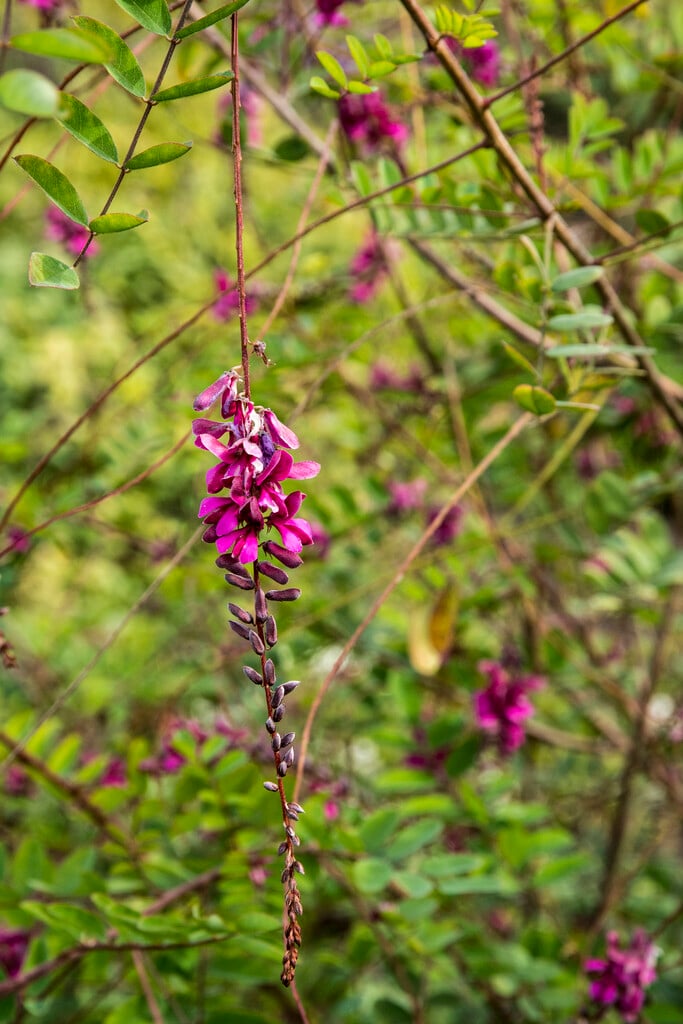Indigofera howellii
An elegant spreading, deciduous shrub up to 3m high and wide, with pinnate grey, green leaves, producing long horizontal to slightly pendulous, tapering racemes of bright pink flowers from June until autumn
Size
Ultimate height
2.5–4 metresTime to ultimate height
5–10 yearsUltimate spread
2.5–4 metresGrowing conditions
Moisture
Moist but well–drained, Well–drainedpH
Acid, Alkaline, NeutralColour & scent
| Stem | Flower | Foliage | Fruit | |
| Spring | Green Grey Silver | |||
|---|---|---|---|---|
| Summer | Pink | Green Grey Silver | ||
| Autumn | Pink | Green Grey Silver | ||
| Winter |
Position
- Full sun
Aspect
East–facing or South–facing or West–facing
Exposure
Sheltered Hardiness
H5Botanical details
- Family
- Fabaceae
- Native to GB / Ireland
- No
- Foliage
- Deciduous
- Habit
- Spreading branched
- Genus
Indigofera can be deciduous or evergreen trees or shrubs, herbaceous perennials or annuals with pinnate leaves and spikes or racemes of small, pea-like flowers in summer or autumn
- Name status
Correct
How to grow
Cultivation
Grow in well-drained, moderately fertile soil in full sun
Propagation
Propagate by seed sown in containers in a cold frame in autumn or root softwood cuttings in late spring, semi-hardwood in early to mid-summer
Suggested planting locations and garden types
- Cottage and informal garden
- Coastal
- City and courtyard gardens
- Low Maintenance
- Banks and slopes
- Flower borders and beds
- Wall side borders
Pruning
Pruning group 1 or pruning group 13 if wall-trained. Pruning group 6 in areas with hard winters
Pests
Generally pest-free
Diseases
May be susceptible to honey fungus in gardens where it is present but insufficient data to determine degree of susceptibility
Love gardening
Sign up to receive regular gardening tips, inspiration, offers and more
View our Privacy Policy
Get involved
The Royal Horticultural Society is the UK’s leading gardening charity. We aim to enrich everyone’s life through plants, and make the UK a greener and more beautiful place.
